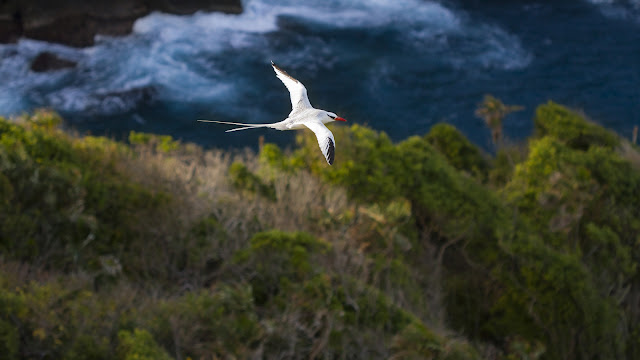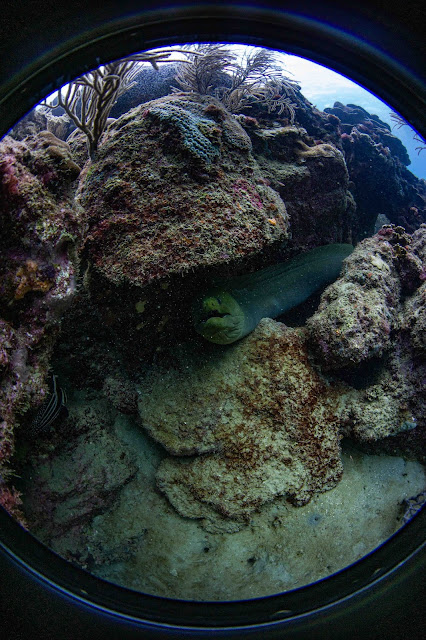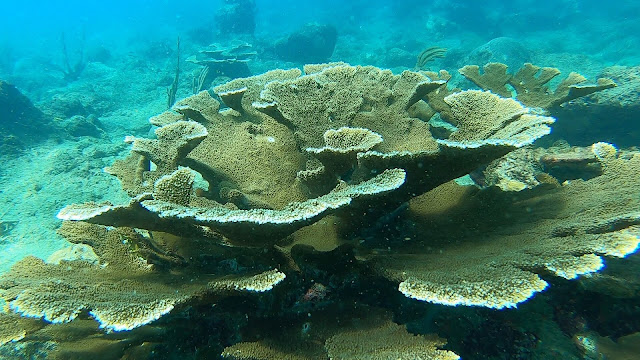Celebrating Nature in the Commonplace
Look
outside your window, your car, your self, and take note of nature nearby. All
around us, in Tobago and Trinidad, says Faraaz Abdool, there’s some small natural
wonder to connect us with the living world. If we can enjoy the nature in our
backyards, we can to a greater extent appreciate the rare and exotic.(Photos of the birds by Faraaz Abdool)
As birders, we’re often jaded
when it comes to birds we’ve grown accustomed to. As human beings, this occurs
not just with birds but with other facets of our lives. A saying has been
coined to reflect this very phenomenon: “one man’s trash is another’s treasure”
Why has it become second nature
to take things for granted? Have we evolved into a superficial species whose
lives are comprised of hurried snapshots of our surroundings – surroundings
which are quickly fading into oblivion with the increasing popularity of a
self-absorbed culture? With instant gratification a baseline requirement,
facilitated by continuous connectivity to social media, we’re losing one of the
most crucial qualities – patience.
 |
| Common in T&T and Venezuela, the
Copper-rumped Hummingbird is rare anywhere else, and a "lifer" for visiting
birders.
|
The act of taking a “selfie”
ranges from a few seconds in a restaurant bathroom to an extensive search for
the correct background - it may be a beautiful beach or lookout point. Either
way the premise is the same: the person in the photo is the most important
ingredient. This takes our shallow appreciation of our surroundings to new
heights. After everything, looking back on archived selfies, it may be
difficult to determine whether that photo from two years ago was taken at
Flagstaff Hill or Mount Dillon. It may seem like an absurd argument, but
something that seems so innocuous has far-reaching consequences in terms of our
subconscious psychology.
Adjusting the focal point of a
photo of a jaw-dropping vista from the landscape to the person in front of it
aids in further distancing oneself from the environment, albeit subconsciously.
The virtual environment beckons. Use that data package to post the freshly
taken picture immediately, but not before some careful minutes are spent in
editing, smoothing skin, lightening the odd blemish here and there, taking care
to ensure that we are as beautiful as we feel so that our virtual community can
firmly place that stamp of validation in the form of likes.
 |
| Wood Storks are common across southern North America, but
very rare in Trinidad and never recorded on Tobago. This bird was photographed
at a rookery in the Everglades, Florida.
|
While we’re carefully
hashtagging our Instagram post, the sun is setting, the breeze picks up ever so
gently and brings in a mixed flock of Magnificent Frigatebirds and Brown
Pelicans just overhead, close enough to pick out droplets of water on the
pelicans’ full bellies. A Red-rumped Agouti scurries across the road, followed
by her diminutive offspring at full stretch trying to keep up. Life is going
on. And we’re not only missing it as it unfolds, we’re also gradually losing
the understanding and appreciation of its grandeur.
If you’re wondering what
grandeur lies in a sight that has been seen multiple times, you definitely need
to look further. Nature is infinite in her design, her character is boundless.
And she is in a constant state of flux. The same beach today looks different
from yesterday, and will further change tomorrow.
What does this mean though? Why
these ramblings? Is there any relevance to our lives today? Is the writer
pushing for an outdated life? This is the age of information, the age of
high-speed, free-flowing bits and bytes, right?
Before we become completely
lost in cyberspace, putting more and more distance between our actual existence
and our virtual existence, let’s get out there, take some deep breaths and a
good look around and contemplate our place within this massive organism called
Planet Earth. While reality and virtual reality are not mutually exclusive,
humans are not particularly well-known for the ability to maintain any form of
balance. Social media is a powerful tool – this article will be read by many via
some form of social media – but much care must be taken to continue to
cultivate a connection that doesn’t depend on an internet service provider.
 |
| Snail Kites have turned up in T&T, albeit very
rarely. They are extremely common and widespread in the vicinity of waterways -
in this case the Suriname River in northern South America.
|
Like it or not, we are all part
of nature. We are not made of concrete, glass or steel, but matter that is
completely organic. A link to what we all are a part of is not only
recommended, but necessary. The beauty lies in the fact that nature can be
appreciated on any scale, whether it’s a magnificent landscape from the top of
a mountain or a tiny butterfly, delicately sipping nectar from a roadside
flower. Nature can bring a sense of peace. The next time you’re stuck in
bumper-to-bumper traffic, instead of angrily staring at the red lights facing
you – just let your eyes wander a little, appreciate the trees swaying gently
in the wind, or the clouds lazily tracing their path across the sky and
experience a positive effect from a very passive activity. There is a reason that
if one searches for stress relief music or videos, the first results are sights
and sounds of nature. Starting points should always be the most accessible; and
luckily for us, nature is forgiving and welcoming. Crashing waves, distant
thunderstorms, birds chirping in the morning and rivers flowing are all
accessible to us fortunate souls living in a lush twin-island nation.
Our commonly seen species and
vistas are no less magnificent and deserving of respect than rarities or
so-called once in a lifetime experiences. It is simply a matter of perspective.
The overwhelming majority of the seven billion people on this planet will never
take a single step on the pink sand of Lover’s Bay, let alone take a single
breath of fresh mountain air in the early morning within the rainforest at Main
Ridge. Even the ubiquitous Copper-rumped Hummingbird – our “default”
hummingbird within T&T – can only be found here and in neighboring
Venezuela. Most folks will never lay eyes on one. Our sights and sounds are
completely unique, and so are we. With the understanding that wilderness is
ever-changing, an acceptance of every single experience being once in a
lifetime should follow.
 |
| The Cuffie River in the dry season, its bed filled with dry bamboo leaves. Photo by Joanne Husain. |
 |
| The Cuffie River grows green again in the wet season.
Photo by Joanne Husain.
|



